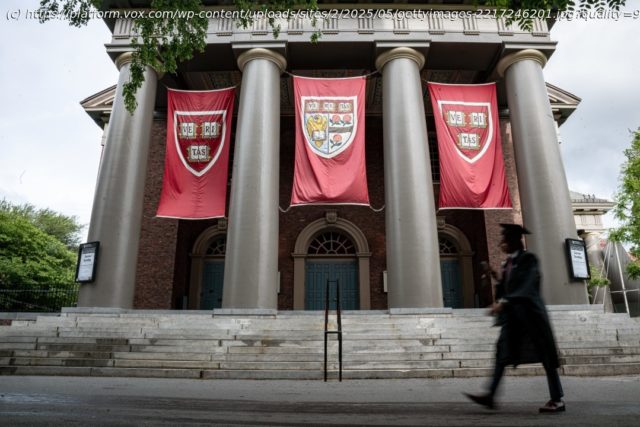In his latest move, Trump is attacking the people who have helped bail out American higher education.
The Trump administration’s recent decision to bar international students from attending Harvard University was less a policy decision than an act of war. The White House had hoped its opening salvo against the nation’s oldest university would yield the kind of immediate capitulation offered by Columbia University. When Harvard chose to fight back instead, Trump decided to hit the university where it hurts most.
The administration’s actions are illegal and were immediately stayed by a federal judge. But that won’t prevent real harm to students and higher learning.
While Harvard has a famously selective undergraduate college, most of the university’s students are in graduate or professional school, and more than a third of those older students arrive from other countries. Overall, more than a quarter of Harvard’s 25,000 students come from outside the United States, a percentage that has steadily grown over time. The proportion of Harvard’s international students has increased 38 percent since 2006.
Even if the courts continue to block this move, it will be difficult for anyone to study there knowing they might be deported or imprisoned by a hostile regime — even if they’re the future queen of Belgium. And an exodus of international students will end up harming universities far beyond Harvard, as well as American research and innovation itself.
The question looming over higher education is whether the international student ban is merely the next escalation of the Trump administration’s apocalyptic campaign against a handful of elite institutions (as seen by the administration’s announcement Tuesday that it would cancel its remaining federal contracts with Harvard) — or the beginning of a broader attempt to apply “America First” protectionist principles to one the nation’s most valuable and successful export goods: higher learning. The rapid growth of international college students in the 21st century represents exactly the kind of global cooperation the isolationists in the White House would love to destroy. International students helped buoy American universities after the Great Recession
In recent decades, international enrollment has shaped, and in some places transformed, higher learning across the country. According to the State Department, the number of annual F-1 student visas issued to international students nearly tripled from 216,000 in 2003 to 644,000 in 2015. And while many nations sent more students to America during that time, the story of international college enrollment over the last two decades has been dominated by a single country: the People’s Republic of China.
In 1997, roughly 12,000 F-1 visas were issued to Chinese students; this was only a third of the number issued to the two biggest student senders that year, South Korea and Japan. Chinese enrollment started to accelerate in the early aughts and then exploded: 114,000 by 2010; 190,000 in 2012; and a peak of 274,000 in 2015.
The change was driven by profound social and economic shifts within China. Mao Zedong’s Cultural Revolution essentially shut down university enrollment for a decade. When it ended in 1976, there was a huge backlog of college students who graduated in the 1980s into the economic liberalization of Deng Xiaoping.






